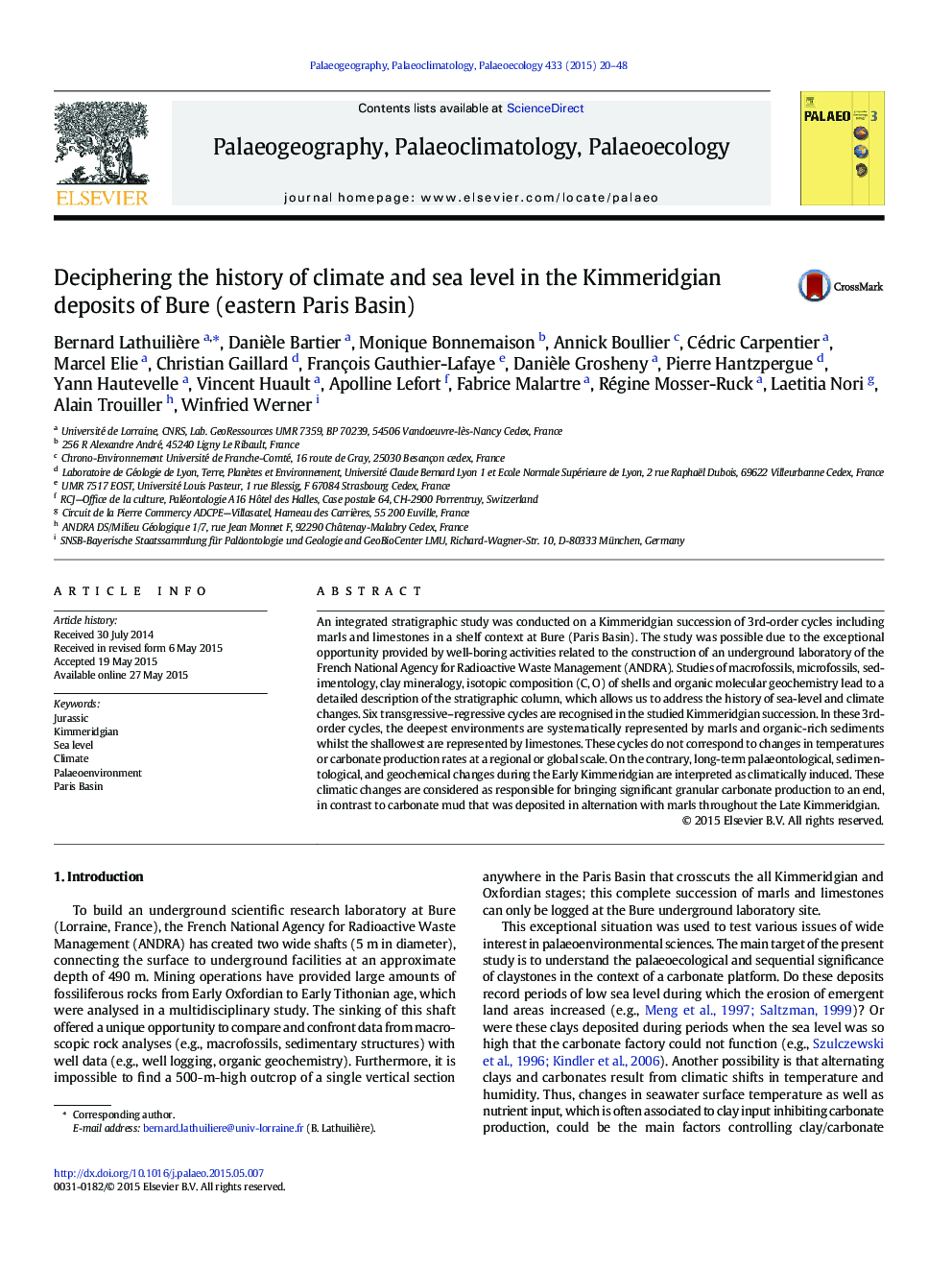| کد مقاله | کد نشریه | سال انتشار | مقاله انگلیسی | نسخه تمام متن |
|---|---|---|---|---|
| 4465916 | 1622157 | 2015 | 29 صفحه PDF | دانلود رایگان |
• We document a unique Kimmeridgian section using a very wide range of methods.
• We document a climatic history and associated decline of carbonate production.
• In this context, long-term sedimentary cycles are related to sea-level fluctuations.
• In the facies model, marls are deposited in deeper waters than limestones.
• The succession of long-term sequences allows correlations at the scale of the basin.
An integrated stratigraphic study was conducted on a Kimmeridgian succession of 3rd-order cycles including marls and limestones in a shelf context at Bure (Paris Basin). The study was possible due to the exceptional opportunity provided by well-boring activities related to the construction of an underground laboratory of the French National Agency for Radioactive Waste Management (ANDRA). Studies of macrofossils, microfossils, sedimentology, clay mineralogy, isotopic composition (C, O) of shells and organic molecular geochemistry lead to a detailed description of the stratigraphic column, which allows us to address the history of sea-level and climate changes. Six transgressive–regressive cycles are recognised in the studied Kimmeridgian succession. In these 3rd-order cycles, the deepest environments are systematically represented by marls and organic-rich sediments whilst the shallowest are represented by limestones. These cycles do not correspond to changes in temperatures or carbonate production rates at a regional or global scale. On the contrary, long-term palaeontological, sedimentological, and geochemical changes during the Early Kimmeridgian are interpreted as climatically induced. These climatic changes are considered as responsible for bringing significant granular carbonate production to an end, in contrast to carbonate mud that was deposited in alternation with marls throughout the Late Kimmeridgian.
Journal: Palaeogeography, Palaeoclimatology, Palaeoecology - Volume 433, 1 September 2015, Pages 20–48
